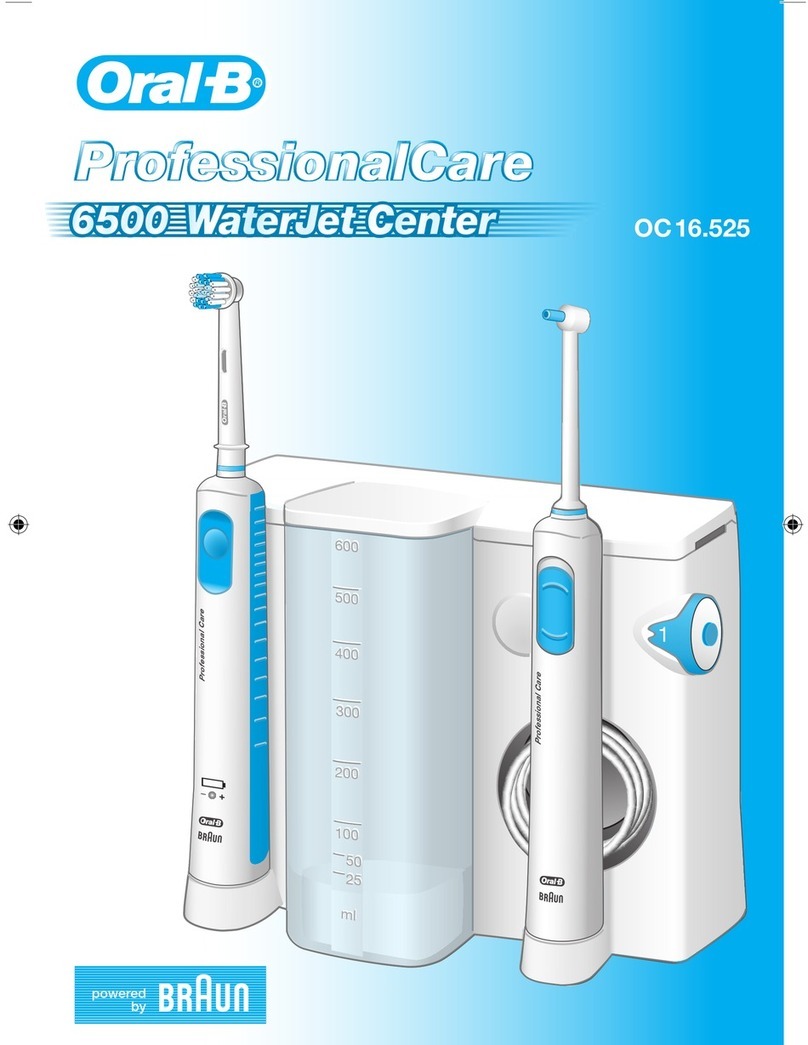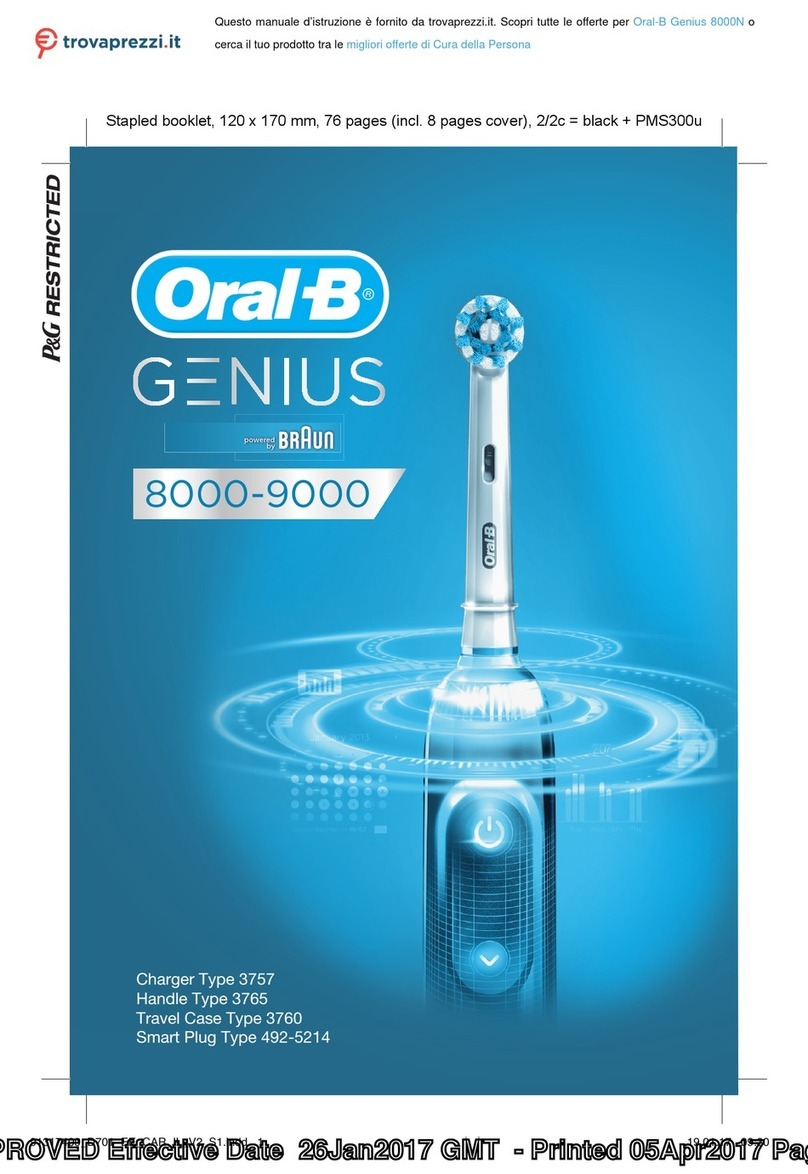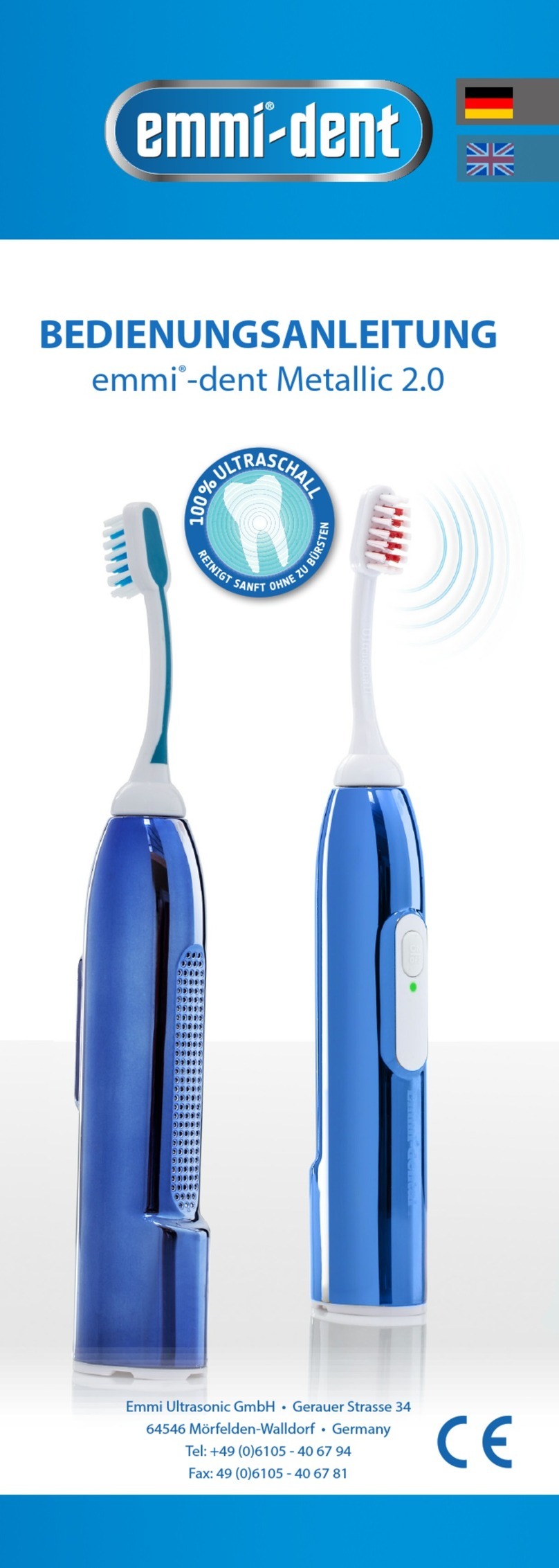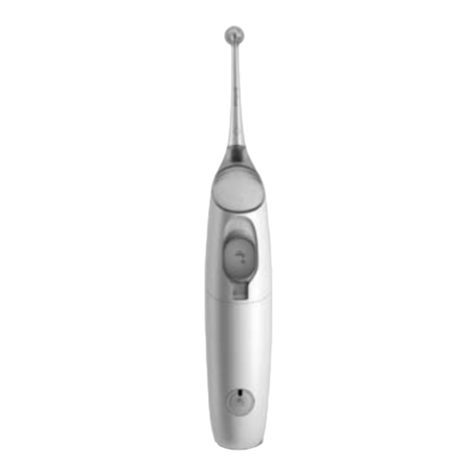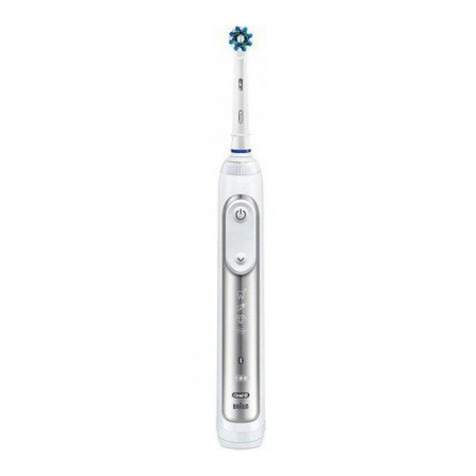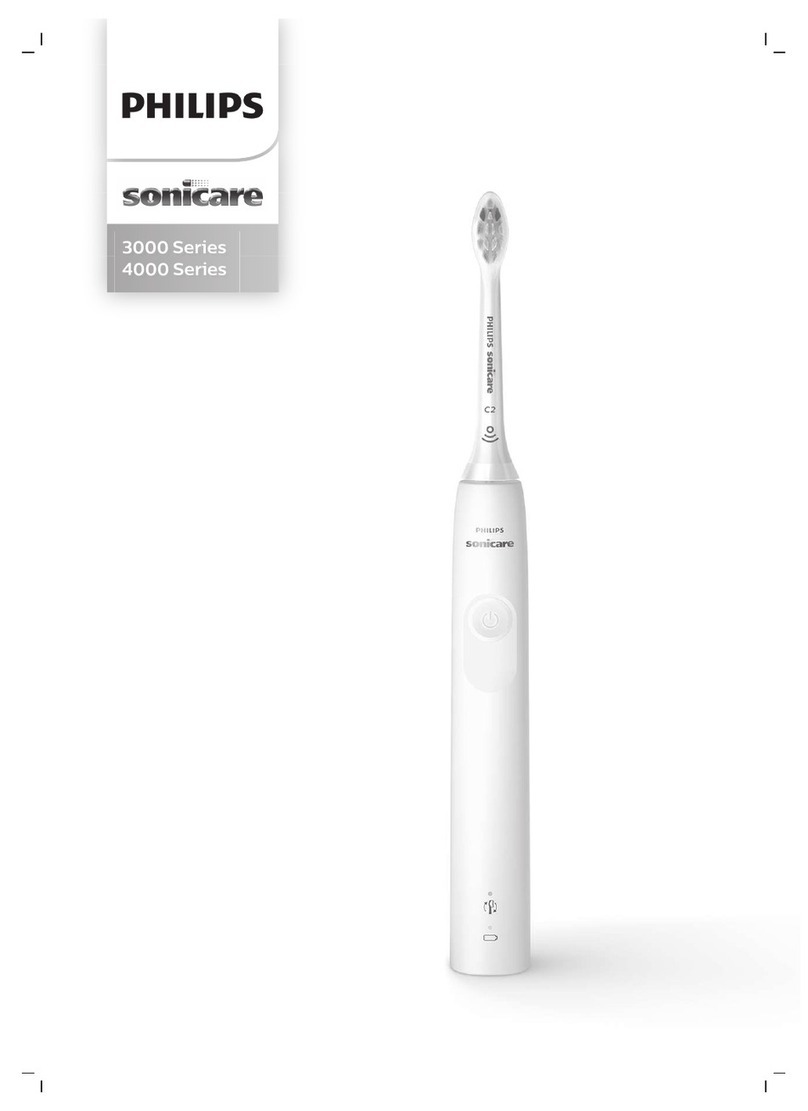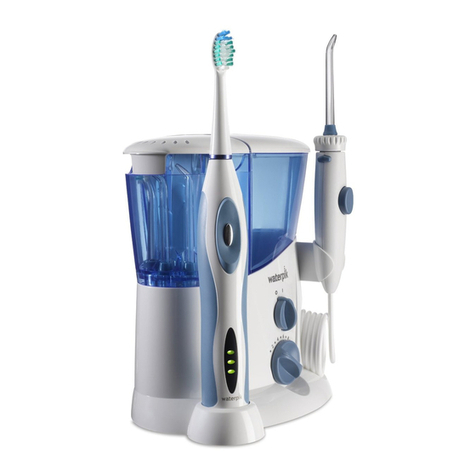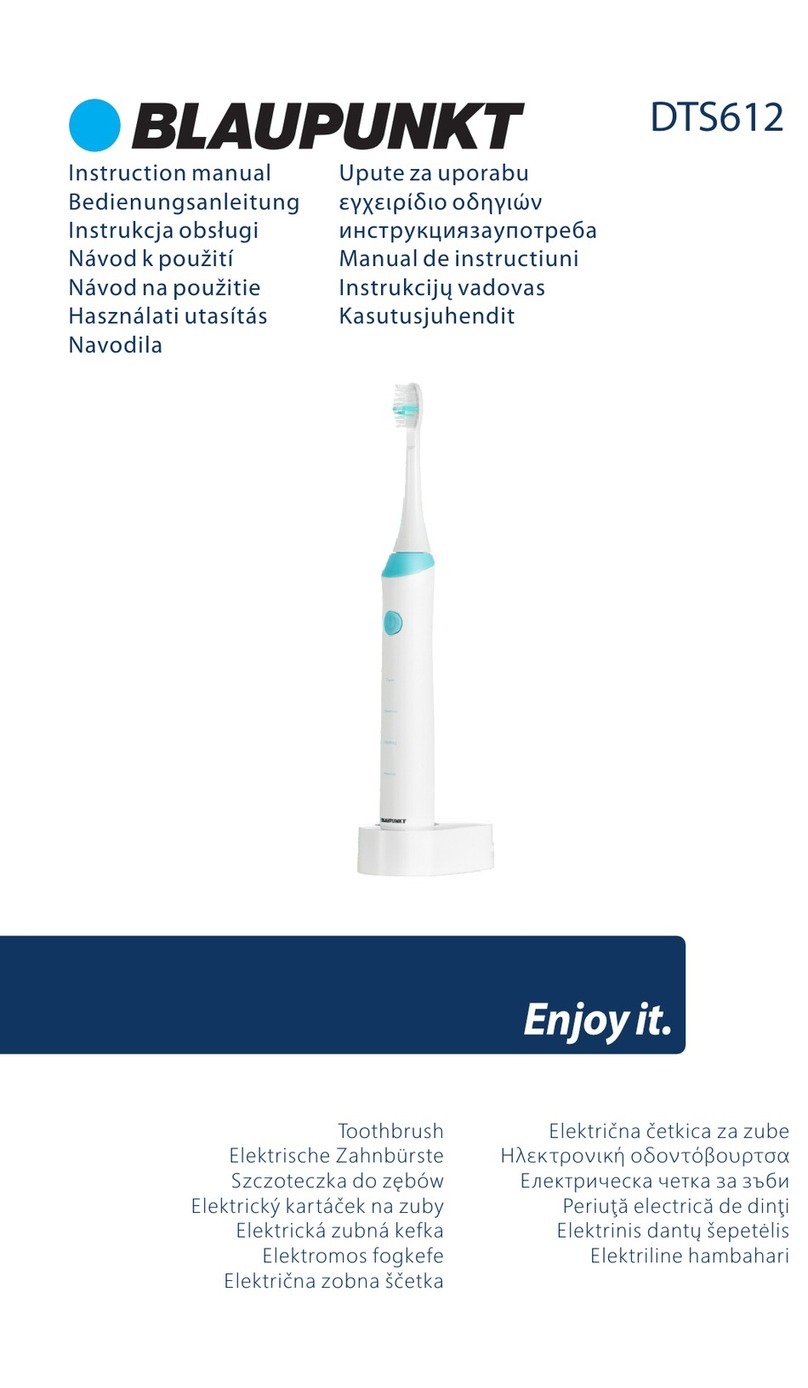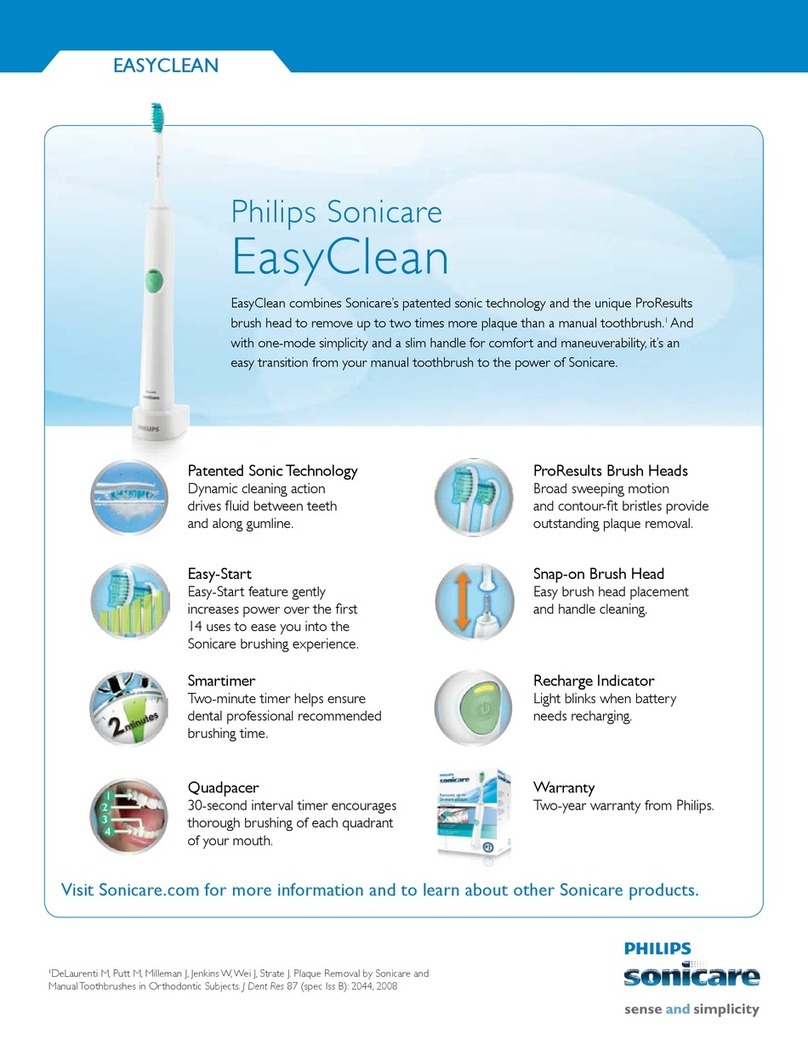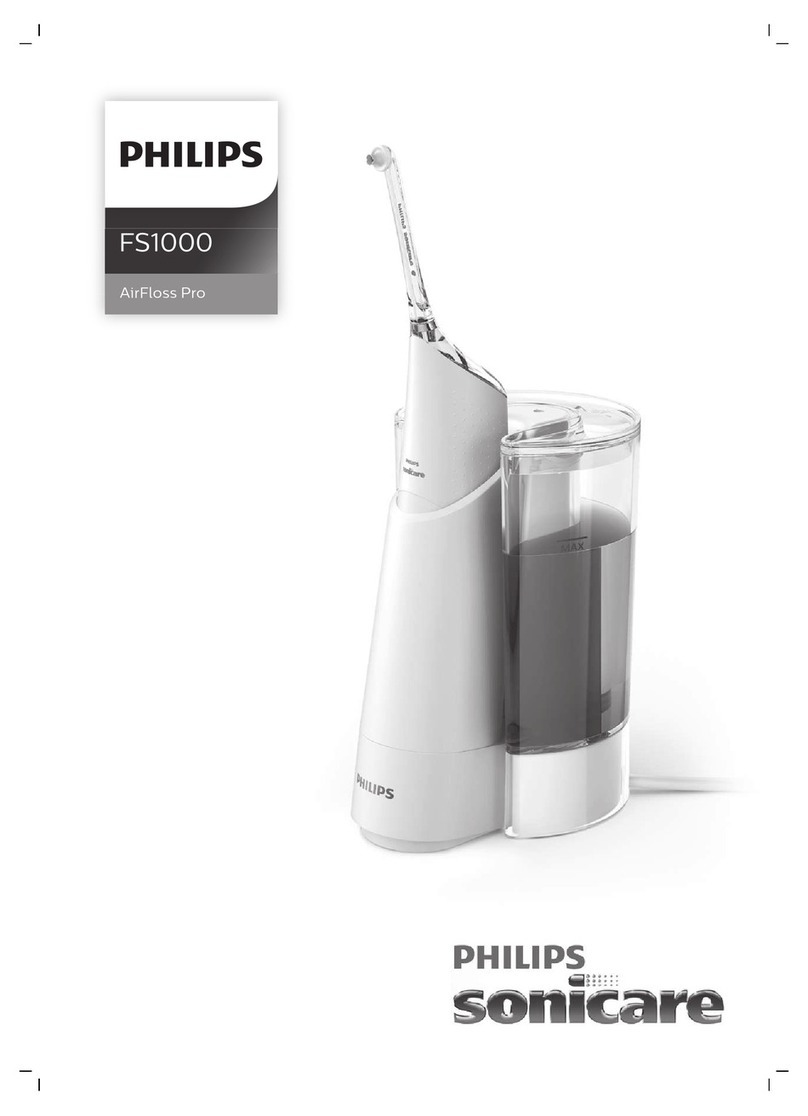Nemo XVE-2100400 User manual



1
Functional Description and Specifications
Intended Use
The Nemo hull cleaner electric brush is specifically designed for
divers, boaters, industrial and marine professionals to make in-water
boat cleaning easy. Remove hardened barnacles, algae, moss, scum
lines and tough stains; reach rudders, keels, propellers and all in-
water boat surface up to 50m (164 ft) deep.
Packing List
Your Nemo hull cleaner electric brush is packaged together with the
following accessories:
Battery charger
Brush
Side handle
Carrying case
Technical Specifications
Battery Charger
Model
XVE-2100400
Approximate charging time
150 mins
Charging output voltage
21V
Charging input voltage
100V –240V

2
Nemo Hull Cleaner Electric Brush
Model
HCEB-18V-10Li-50
Motor
Brushless 900W
Min/Max speed
120/160 RPM
Net weight (without battery and
brush)
2.3kg
Dimensions (with 10Ah battery)
205 x 122 x 410 mm
Brush Diameter
300 mm
Run time underwater (no load/
no pressure inside)
370 mins
Submersible up to
50m (164 ft)
Caution: You must pressurize the Nemo hull cleaner
electric brush before you can use it underwater, as
described in Pressurizing the Nemo Hull Cleaner Electric
Brush for Underwater Use, page 13.

3
Safety Warnings
Warning: Read all safety warnings and instructions, and
save them for future reference. Failure to adhere to
these warnings can result in serious injury and damage
to equipment.
Work Area Safety
All work should be done in accordance with the local, state,
and government occupational safety and health guidelines.
Keep your work area clean and well lit.
Do not operate power tools in explosive atmospheres, such as
in the presence of flammable liquids, gases, or dust.
Keep bystanders and children away when operating power
tools.
Personal Safety
Stay alert and use common sense when operating power tools.
Do not use power tools when you are tired or under the
influence of drugs, alcohol, or medication.
Use personal protective equipment. It is recommended to
always wear eye protection, as well as a P2 filter-class
respirator.
Dust from materials such as lead-containing coating, some
wood types, minerals, and metal can be harmful to one’s
health. Observe the relevant regulations in your country for the
materials to be worked.
General Power Tool Safety
Store idle power tools out of reach of children, and do not
allow persons unfamiliar with the power tool or these
instructions to operate the power tool.

4
Maintain your power tools. Check for misalignment or binding
of moving parts, breakage of parts, and any other conditions
that may affect the power tool’s operation. If damaged, have
the power tool repaired by an authorized service technician.
Caution: Under no circumstances should the power
tool be opened for repairs or any other purpose by
anyone other than an after-sales service technician
authorized by Nemo Power Tools. Opening the power
tool invalidates the manufacturer warranty.
Use power tools and accessories in accordance with these
instructions and in the manner intended for the particular type
of power tool, taking into account the working conditions and
the work to be performed. Consult local, state, and
government occupational safety and health guidelines before
operating a power tool.
Hold the power tool with a firm grip.
Work only on stable items. Do not hold any workpiece in your
hand. Secure the workpiece with clamping devices or in a vice.
Always wait until the power tool has come to complete stop
before placing it down.
General Brush Cleaning Tips
When using the brush submerged:
Use the softest brush that will get the job done.
Use the slowest speed that will get the job done.
Allow the hull cleaner electric brush to do the work. Don’t fight
it.
Do not apply excess pressure to the surface you are cleaning.
Do not scrub, just guide the brush in the direction you want to
clean.
Occasionally change hands, grip and position to equalize loads
on your muscles.

5
It may take some practice to get efficient with the hull cleaner
electric brush. You will need to unlearn hand scrubbing
techniques. Be prepared to use one to two batteries while
familiarizing yourself with its operation and a new brush
technique.
When using the brush above the waterline:
Use the softest brush to get the job done.
Keep the tool unit cool when using it on deck by spraying with
water regularly.
Test the brush on an inconspicuous spot before using it to
clean a surface.
Ensure the surface is kept wet when using the brush to clean.

6
Rechargeable Battery Safety
Use only the battery pack supplied with your power tool.
When the battery pack is not in use, keep it away from other
metal objects like paper clips, coins, keys, nails, and screws,
which can make a connection from one terminal to another.
Store and charge the battery pack within a temperature range
of 0˚C - 45˚C (32˚F - 113˚F).
Before any work on the power tool, such as a tool change, as
well as during transportation and storage, remove the battery
pack from the power tool. There is danger of injury when
accidently activating the On position.
Do not open the battery.
Protect the battery against heat, including continuous sun
irradiation and fire.
When the battery is defective, liquid can escape and come into
contact with adjacent components.
Use only original batteries with the voltage listed on the
nameplate of your power tool. When using other batteries,
such as imitations, reconditioned batteries, or other brands,
there is danger of injury as well as property damage through
exploding batteries.
Use only the battery charger provided with the power tool to
recharge the battery. Only this battery charger is matched to
the lithium-ion (Li-ion) battery of your power tool.
Protect the battery charger from rain and moisture. The
battery charger is not waterproof.
Do not charge other batteries. The battery charger is suitable
only for charging the battery pack supplied with the tool.
Before use, always check the battery charger, cable, and plug. If
defects are detected, do not use the battery charger. Never
open the battery charger. Only have it opened and repaired by
qualified personnel who will use original spare parts.

7
Getting Started with the Hull Cleaner Electric Brush
Your Nemo Hull Cleaner Electric Brush (HCEB-18V-10Li-50) includes
the following main components:

8
Charging the Battery
The battery is supplied partially charged, and must be charged to
full capacity before using the hull cleaner electric brush for the first
time.
Caution: Only use the battery charger provided with
the hull cleaner electric brush. Only this battery charger
is matched to the Li-ion battery supplied with your
power tool.
Danger: Ensure that the voltage of the power supply
corresponds with the data given on the nameplate of
the battery charger.
Danger: Only use the charger in a dry environment. The
charger is not waterproof. Never attempt to charge the
battery underwater.
The battery can be charged at any time without reducing its service
life. The battery charger detects the charging condition of the
battery, and charges it with the optimum charging current for its
temperature and voltage. This lengthens the battery life, and leaves
it fully charged when stored in the charger.
Interrupting the charging procedure does not damage the battery.
Only charge the battery when its temperature is between 0˚C- 45˚C
(32˚ F - 113˚ F).
1. Connect the mains plug of the battery charger to an electrical
outlet. A steady green light on the battery charger indicates
that the charger is ready for operation.
2. Press the battery charger’s connectors into the sockets on the
top of the battery pack. There is only one correct way to insert
the connectors into the battery sockets.

9
The battery begins charging as soon as it is connected to the
charger.
A steady red light on the battery charger indicates that
the battery is charging.
A steady green light on the battery charger indicates that
the battery is fully charged.
3. When you are ready to use the battery, rotate the connectors’
plastic caps counterclockwise and pull the connectors vertically
out of the charger.
Inserting a Battery into the Nemo Hull Cleaner Electric Brush
1. Ensure the speed selector switch is in the Off position.
Caution: To minimize the risk of accidental activation,
ensure the speed selector switch is in the Off position
before performing any maintenance on the hull cleaner
electric brush, as well as during transport and storage.
Caution: Use only a Li-ion battery from the original
factory with the voltage listed on the nameplate of
your hull cleaner electric brush. Using other batteries
not suitable for the hull cleaner electric brush can lead
to malfunctions, cause damage to the power tool, and
pose a fire hazard.

10
2. Place the hull cleaner electric brush on to the battery. There is
only one correct way to position the hull cleaner electric brush
on the battery.
3. Push the hull cleaner electric brush down until it clicks into
place, then close the clips on either side of the battery to lock it
in place. The clips hold the battery pack in position and prevent
it from detaching.

11
Removing a Battery from the Hull Cleaner Electric Brush
1. Ensure the speed selector switch is in the Off position.
Caution: To minimize the risk of accidental activation,
ensure the speed selector switch is in the Off position
before performing any maintenance on the hull cleaner
electric brush, as well as during transport and storage.
2. Open the clips on either side of the battery. These clips hold
the battery pack in position and prevent it from detaching.
3. Gently lift the unit off the battery, without exerting any force.
Fitting the Hull Cleaner Electric Brush Side Handle
The side handle enables you to hold the hull cleaner electric brush
securely with both hands. It is repositionable, and can be fitted on
either side of the unit.
1. Ensure the speed selector switch is in the Off position.
Caution: To minimize the risk of accidental activation,
ensure the speed selector switch is in the Off position
before performing any maintenance on the tool, as
well as during transport and storage.
2. Screw the handle securely into one of the holes found on either
side of the Nemo hull cleaner electric brush body.
Mounting a Brush
1. Ensure the speed selector switch is in the Off position.
Caution: To minimize the risk of accidental activation,
ensure the speed selector switch is in the Off position
before performing any maintenance on the hull cleaner
electric brush, as well as during transport and storage.
2. Pull the chuck sleeve out gently without removing it from the
tool body. Insert the brush spindle into the drive shaft. The
brush spindle will lock into place. Release the chuck sleeve and

12
ensure that the brush spindle is securely locked into the drive
shaft.
Operating the Brush
The brush is controlled by a red switch at the back of the tool unit.
The brush motor has 3 modes: stop/off, low speed, and high
speed. The LED light at the back of the tool unit indicates power
supply. When the LED light starts blinking it is time to recharge the
battery pack.
1. To turn the brush motor ON move the red switch at the
back of the tool unit to middle right for low speed.
2. For high speed move the red switch to the far right.
3. To stop/switch off the motor, move the red switch to the
far left.
4. The brush rotational movement is clockwise.
Dismounting the Brush
1. To remove the brush simply gently pull the chuck sleeve out
and release the brush spindle from the drive shaft.
2. Remove the brush and rinse it clean with fresh water.
3. Leave the brush to dry before storing it back in the hard
carrying case.

13
Pressurizing the Nemo Hull Cleaner Electric Brush for
Underwater Use
Your hull cleaner electric brush can be used in-water, and can be
submerged and used underwater at depths of up to 50m (164ft).
Before submerging the hull cleaner electric brush to any depth
greater than 10m (32.8ft), it must be pressurized.
1. Remove the red cap from the pressure valve on the foot of the
hull cleaner electric brush.
2. Attach a pump, such as the hand pump supplied with the hull
cleaner electric brush, to the valve.
3. Pressurize the hull cleaner electric brush according to the
depth to which you are going to submerge it, as follows:
Depth
Pressure
Up to 5m
Minimum 1 Bar
Up to 10m
Minimum 2 Bars
Up to 20m
Minimum 3 Bars
Up to 30m
Minimum 4 Bars
Up to 40m
Minimum 5 Bars
Up to 50m
Maximum 6 Bars
Caution: Never add more than 6 Bars of pressure to the
hull cleaner electric brush.
Caution: Under no circumstances should the hull
cleaner electric brush be pressurized underwater.
Pressurizing the tool underwater will cause the tool to
burn out.

14
Best Practices for Underwater Operation
Your Nemo hull cleaner electric brush is designed to be waterproof,
so that it can be used both on land and underwater. To obtain the
maximum serviceable life of your hull cleaner electric brush, adhere
to the following best practices when using the Nemo hull cleaner
electric brush underwater:
You must pressurize the hull cleaner electric brush before you
can use it underwater, as described in Pressurizing the Nemo
Hull Cleaner Electric Brush for Underwater Use, page 13.
Do not exceed the maximum operational depth as
recommended by the manufacturer.
The hull cleaner electric brush is hi-tech piece of equipment
and should be treated with care. Its watertight seals may be
damaged if it is dropped.
The hull cleaner electric brush can be used in salt water.
Note: After using the hull cleaner electric brush in salt
water, immediately rinse it in fresh water to remove all
salt residue.
Before storing the hull cleaner electric brush in the carrying
case after use in water, flush it with fresh water and dry it off.
Treat the high-quality battery with care. Keep the battery fully
charged and dry, ready for use, and always store it in the
carrying case when not in use.
To extend the operating time of the battery when working
underwater, ensure the speed selector switch is in the Off
position when the hull cleaner electric brush is not use. When
the speed selector switch is in this position, the battery does
not supply any power to the motor, conserving battery power.
Before inserting the battery in to the hull cleaner electric
brush, check that the O-ring on the body basement is present
and undamaged.
Caution: If the O-ring is missing or does not seal
completely, water can enter the hull cleaner electric
brush or battery, causing serious damage.

15
Maintenance
Servicing the Hull Cleaner Electric Brush
If your Nemo hull cleaner electric brush is damaged or faulty, have
it repaired by an authorized service technician.
Caution: Under no circumstances should the hull
cleaner electric brush unit be opened for repairs or any
other purpose by anyone other than an after-sales
service technician authorized by Nemo Power Tools.
Opening the unit invalidates the manufacturer
warranty.
Transporting the Hull Cleaner Electric Brush
For maximum protection, always transport your hull cleaner electric
brush secured in its carrying case.
The battery pack has effective protection against internal over-
pressure and short-circuiting, as well as devices preventing violent
rupture and dangerous reverse current flow.
The regulations governing dangerous goods may be relevant when
transporting the hull cleaner electric brush and its batteries. It
might be necessary to comply with special conditions, such as those
governing packaging and labeling, when shipping the tool with one
or more batteries.
Disposing of the Hull Cleaner Electric Brush
At the end of its lifecycle, the hull cleaner electric brush, its
accessories, and packaging should be sorted for environmentally
friendly recycling.
Do not dispose of the battery pack in household waste, fire, or
water. Battery packs should be collected, recycled, or disposed of in
an environmentally friendly manner.

16
How to preserve the battery life and store your Nemo
Power Tools
Before using a Nemo Power Tool, ensure that the battery for the
tool has been fully charged to 100%.
Do not operate a Nemo Power Tool, when the battery of the tool is
low in power.
If the battery power becomes low, stop work immediately and
recharge the battery.
When not in use, the Nemo Power Tool should be safely stored
away with the battery disconnected from the power tool.
Never leave the battery connected to the Nemo Power Tool longer
than 24 hours when not in use.
Make sure there is no metal or other things to block the connector
after every dive and keep the brass pin dry when stock.

17
Troubleshooting
Problem: The battery is not charging, and there is a blinking red
light on the battery charger.
Possible Cause
Corrective Action
The battery is not
correctly inserted into the
charger.
Remove the battery from the
charger, then re-insert it correctly.
The battery contacts are
contaminated.
Clean the battery contacts, for
example by repeatedly removing
and inserting the battery, or replace
the battery.
The battery is defective.
Replace the battery.
Problem: The battery charger indicator does not light up.
Possible Cause
Corrective Action
The mains plug is not
correctly plugged in to
the socket.
Insert the mains plug fully into the
socket outlet, and ensure that the
socket is functional.
The socket outlet, mains
cable, or battery charger
are defective.
Check the voltage power; have the
battery charger checked by an
authorized after-service agent.
Caution: Under no circumstances should the hull
cleaner electric brush or accessories be opened for
repairs or any other purpose by anyone other than an
after-sales service technician authorized by Nemo
Power Tools. Opening the hull cleaner electric brush
unit invalidates the manufacturer warranty.

18
Problem: The battery charger is warm to the touch.
Possible Cause
Corrective Action
Continuous or repetitive
charging cycles without a
break may cause the
charger to warm up.
No corrective action is required as
this does not indicate a fault with
the battery charger.
Problem: The battery operation time is significantly reduced,
even after the battery is fully charged.
Possible Cause
Corrective Action
The battery is defective,
or has reached the end of
its life (approximately
1000 charging cycles).
Replace the battery.
Problem: The tool stops suddenly.
Possible Cause
Corrective Action
The tool has overheated.
Switch the speed selector to Off
position. Take the tool out of the
water and remove the battery.
Check the temperature of the tool;
if it is hot, let it cool down, and then
reconnect the battery.
The power in the battery
pack is low.
Check the LED light on the back of
the tool body. If the LED light is
blinking, recharge the battery, or
replace with a fully charged battery.
Table of contents
